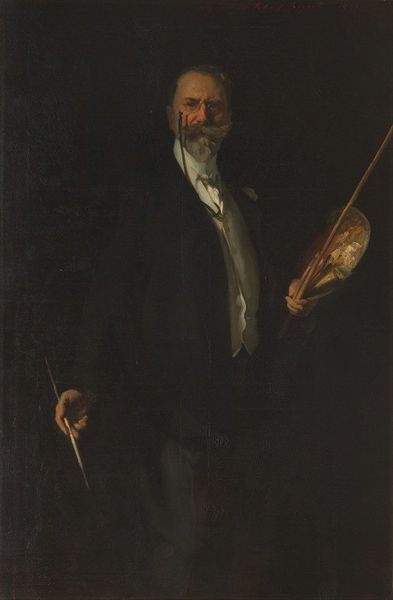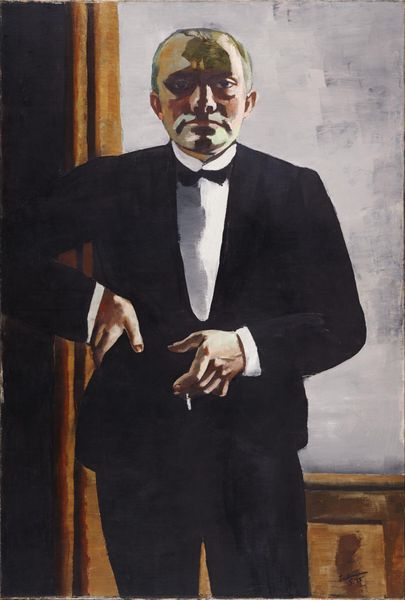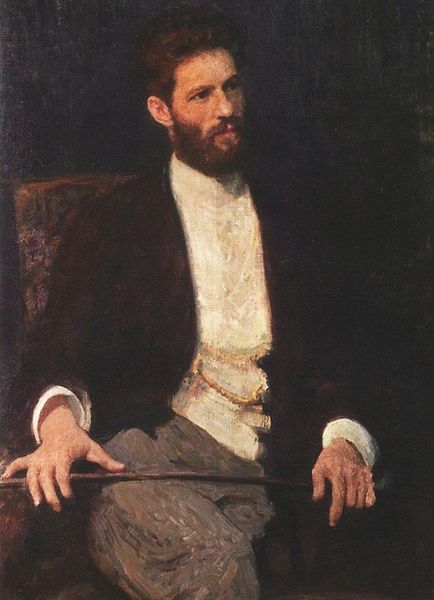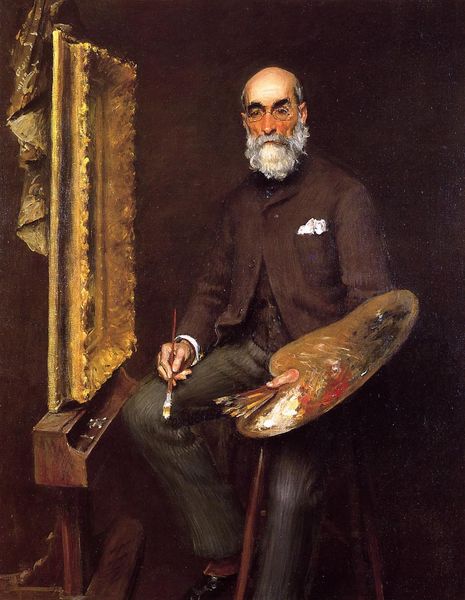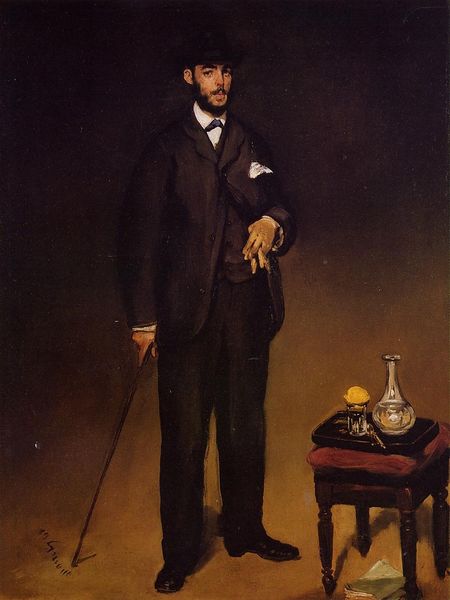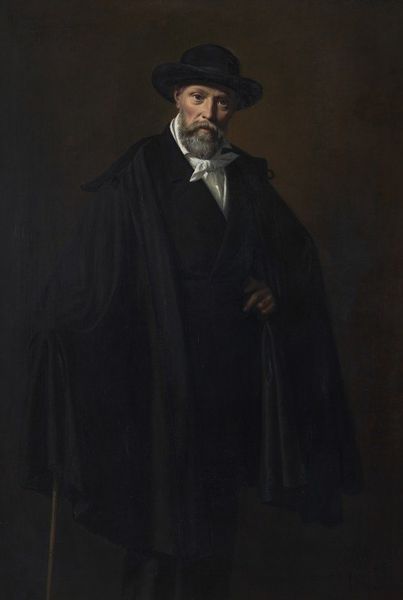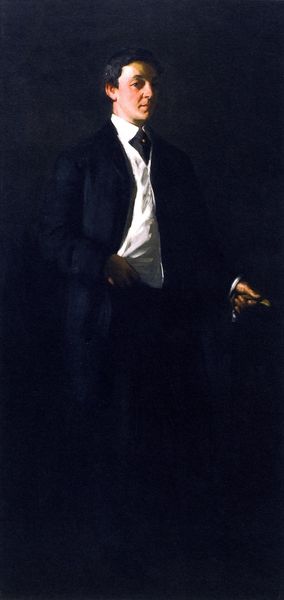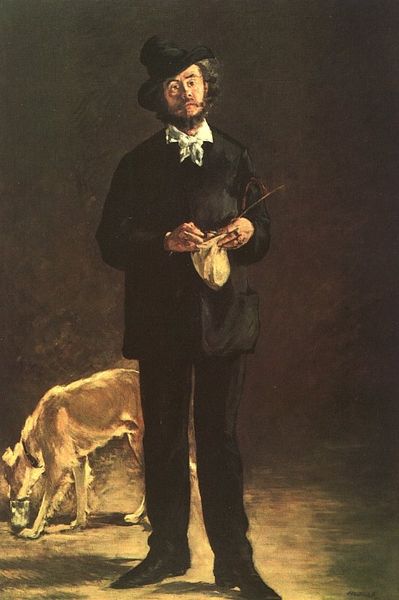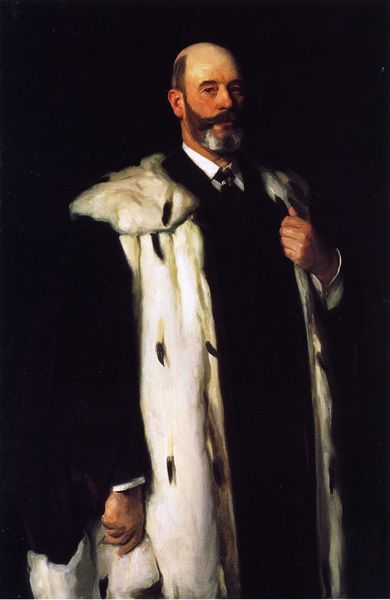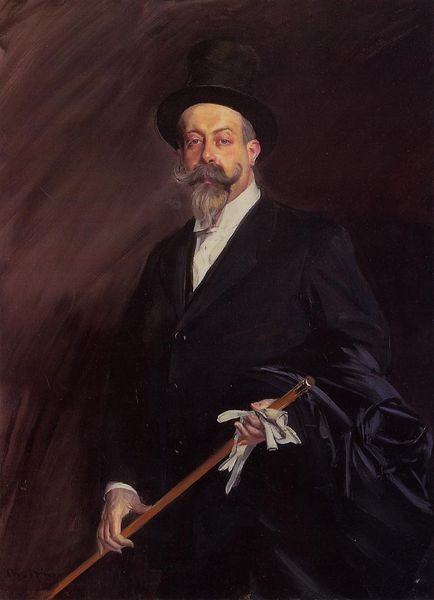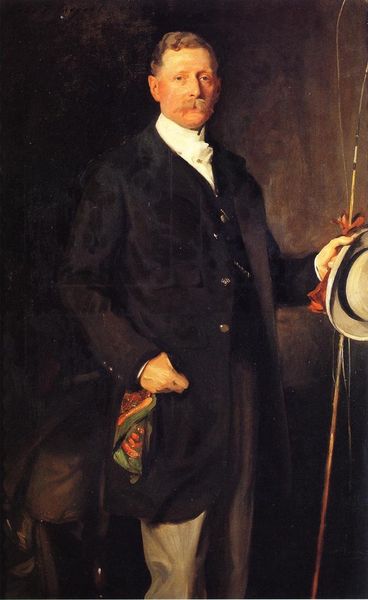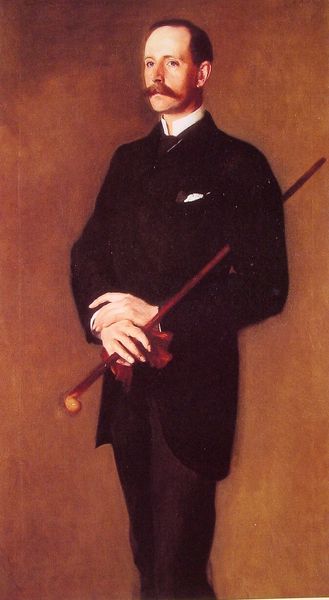
Copyright: Public domain
Editor: Here we have William Merritt Chase's "Portrait" from 1902, rendered in oil paint. The dark backdrop creates an introspective, almost theatrical mood. What social narratives do you think this painting engages with? Curator: I see a fascinating dance between self-representation and societal expectations. Consider the late 19th and early 20th centuries. Artistic identity was becoming increasingly performative. Chase positions himself as a respectable, established figure, the suit, the poised palette, yet his gaze holds a certain defiance, perhaps a commentary on the pressures of artistic validation. How does his class play into this dynamic? Editor: The suit definitely speaks to class. The artist isn't just talented; he's part of a certain elite. Do you think the darkness has something to say? Curator: Absolutely! Think about how this shadowy background can represent the hidden struggles, the doubts, the often obscured realities behind the celebrated artist's facade. In many ways the dark setting is where true emancipation from identity-related expectation lives. How might his identity as a male artist affect your reading of this work? Editor: It adds another layer. Male artists throughout history had a different playing field compared to their female counterparts. There's privilege embedded, but also pressure to maintain a certain status. Curator: Exactly! So, we have Chase deliberately crafting his image, while simultaneously acknowledging, perhaps even critiquing, the constructs that shaped him and continue to shape artists today. Editor: This makes me think about contemporary artists and the performance of their own identities within different social and political contexts. Curator: And the painting as a space for subverting expectations. Editor: I'll definitely look at portraits differently from now on!
Comments
No comments
Be the first to comment and join the conversation on the ultimate creative platform.
